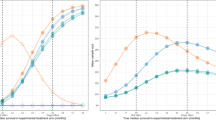Abstract
The design of an oncology clinical program is much more challenging than the design of a single study. The standard approach has been proven to be not very successful during the past decade; the failure rate of phase 3 studies in oncology is about 66%. Improving the development strategy by applying innovative statistical methods is one of the major objectives for study teams designing and supporting oncology clinical programs. However, evaluating trial design alternatives is difficult; the designs may have different advantages—better power, better type I error control, shorter duration, or more accuracy-and their relative performance may depend on assumptions about the drugs’ performance. Evaluating different early phase designs in particular suffers from both these problems. This paper is built on the work of the DIA’s Adaptive Design Scientific Working Group oncology subteam on an Adaptive Program. With representatives from a number of institutions, this group compared 4 hypothetical oncology development programs that each was to select between 2 treatments and decide whether to proceed to phase 3, using probability of the clinical program’s success and expected net present value (eNPV). Simulated scenarios were used to motivate and illustrate the key ideas. For the development strategies, we believed that the eNPV showed a distinct and robust improvement for each successive strategy.
Similar content being viewed by others
References
Berry D. Adaptive clinical trials in oncology. Nat Rev Clin Oncol. 2012;9:199–207.
Jennison C. Effective design of phase II and phase III trials: an over-arching approach. Presented at: ADAPT Conference on Adaptive Clinical Trials; September 7–9, 2011; Philadelphia. Available at: https://people.bath.ac.uk/mascj/talks_2011/cj_ADAPT.pdf. Accessed July 1, 2013.
Patel N, Bolognese J, Chuang-Stein C, Hewitt D, Gammaitoni A, Pinheiro J. Designing phase 2 trials based on program-level considerations: a case study for neuropathic pain. Drug Inf J. 2012;46:439–454.
Antonijevic Z, Kimber M, Manner D, Burman CF, Pinheiro J, Bergenheim K. Optimizing drug development programs: type II diabetes case study. Drug Inf J. 2013;47:363–374.
Pharmaceutical Research and Manufacturers of America. PhRMA report on medicines in development for cancer: 2011. Available at: https://www.phrma.org/media/releases/nearly-1000-medicines-development-help-patients-their-fight-against-cancer. Accessed July 1, 2013.
DiMasi JA, Feldman L, Seckler A, Wilson A. Trends in risks associated with new drug development: success rates for investigational drugs. Clin Pharmacol Ther. 2010;87:272–277.
Sutter S, Lamotta L. Cancer drugs have worst phase III track record. IMNG Medical Media. February 16, 2011. Available at: https://www.practiceupdate.com/news/1470. Accessed July 1, 2013.
Author information
Authors and Affiliations
Corresponding author
Rights and permissions
About this article
Cite this article
Marchenko, O., Miller, J., Parke, T. et al. Improving Oncology Clinical Programs by Use of Innovative Designs and Comparing Them via Simulations. Ther Innov Regul Sci 47, 602–612 (2013). https://doi.org/10.1177/2168479013495685
Received:
Accepted:
Published:
Issue Date:
DOI: https://doi.org/10.1177/2168479013495685




